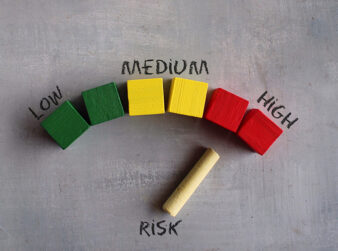Risk assessment is a technical term used by safety practitioners worldwide. Be it construction activities or a general industrial set up, Risk assessment is applied as a risk control tools everywhere.
Literally it has two terms, Risk and assessment. Risk is likelihood of consequences. Likelihood also mean probability and consequences here mean severity. That means, what are the chances of accidents taking place(see matrix below),and how severe the accident will be(see matrix below)
For example, if you are travelling in a car, probability(likelihood) and severity(consequences) will vary if compared with travelling in an aircraft because in the case of car, probability will be high and severity will be low, however it is just opposite in the case of aircraft travelling.
Assessment, means assessing as to who will be harmed and how?
Since RA is based upon risk matrix (RM), students must have a fair idea of risk matix.RM is designed by senior HSE manager of a company, having quite a long understanding of company work activities and accidents history. Safety officer’s duty is to carry out RA and give risk value of a particular work activities based upon the RM used by that company management. That’s all; RM plays only that much of role.
Friends, so far we have understood risks, assessment and risk matrix. It is now time to understand risk assessment process, popularly called 5 steps of risk assessment.
First Step: Identify The Hazards
In order to identify hazards, safety officer must focus on work activities and fully familiarized themselves with method statement. Methods statement is a document prepared by work/task engineers and forwarded to HSE department for further preparation of RA. Any work activities, which has got potential to cause harm, is Hazards. So in order to identify the hazards, you have to understand work activities and factors like how many workers will be involved, what types of tools and machinery, they are going to use, what will be their working environment etc. Now as safety officer you have to list out all these hazards as your first step. For your easy understanding, I am listing out few hazards of a construction site.
- Movements of transport
- Pedestrian movement
- Working at height
- Handling COSHH
- Manual handling
- Working in hot/cold environment
- High windy whether condition
Second Step: Identify Who Will Be Harmed And How?
In this second process, safety practitioners have to weigh some simple question to get an idea. For example, how many operatives will carry out the work? What will be their trades? Here comes the chance to give a thought whether any sub-contractor will be involved or not, any visitors at the work location, any member of public or neighborhood community.
In order to understand how they will be harmed, you have to focus on their steps of activities and methods and materials being used.
Third Step: Evaluate The Risk And Decide On Precaution
While evaluating the risk, safety professionals analyze hazards with the help of risk matrix, which I have already explained in above paragraph. After evaluating the risk, now it is time to suggest controls (precautions) measures. The control measures are technical in nature, which are taught in Nebosh IGC classes.
Fourth Step: Record Your Finding And Implement
The risk assessment is a document on which the safety professional records 5 steps. A figure is given below to help you acquaint with one such document.
| TASK RISK ASSESSMENT | ||||||||
| SL.NO. | ACTIVITIES | PERSONNEL INVOLVED | HAZARDS | RISK | CONTROL MEASURES | RESPONSIBLE | ||
| P | S | T | ||||||
| 1 | Barricade area | Operatives and other involved in task | Slips, trips and fall due to poor housekeeping | 3 | 4 | 12 | Use safe access /egress provided with steps and hand rails.Maintain good housekeepingDisplay sign for hole / opening and barricade it.All protruding and uneven place to be barricaded and highlighted All loose material and trailing cable protected | Supervisor |
Fifth Step: Review Assessment & Revise If Necessary
The risk assessment is a continuous process because it depends upon work pattern and work dynamism, which is in itself changing in nature. So we can say that risk assessment must be reviewed periodically and be communicated to operatives, if any new revisions have taken place. It is also a legal requirement to review periodically.
Last but not the least, that risk assessment is a legal requirements and hence safety practitioners are duty bound to maintain it at workplace.




